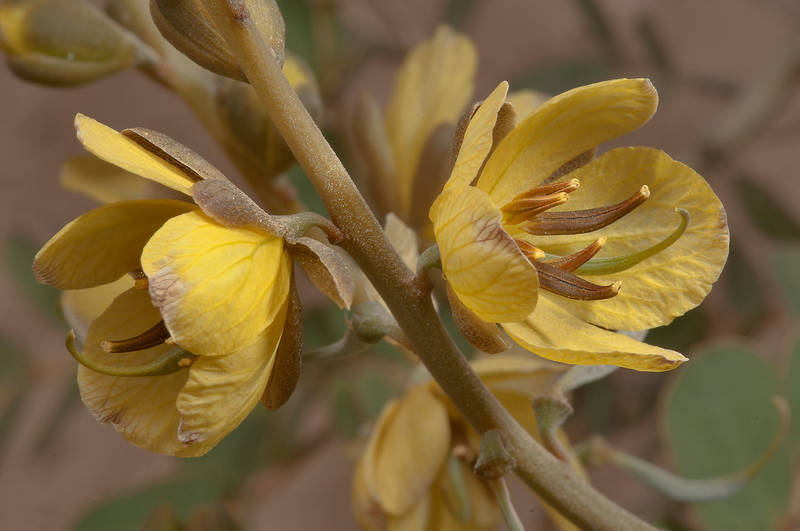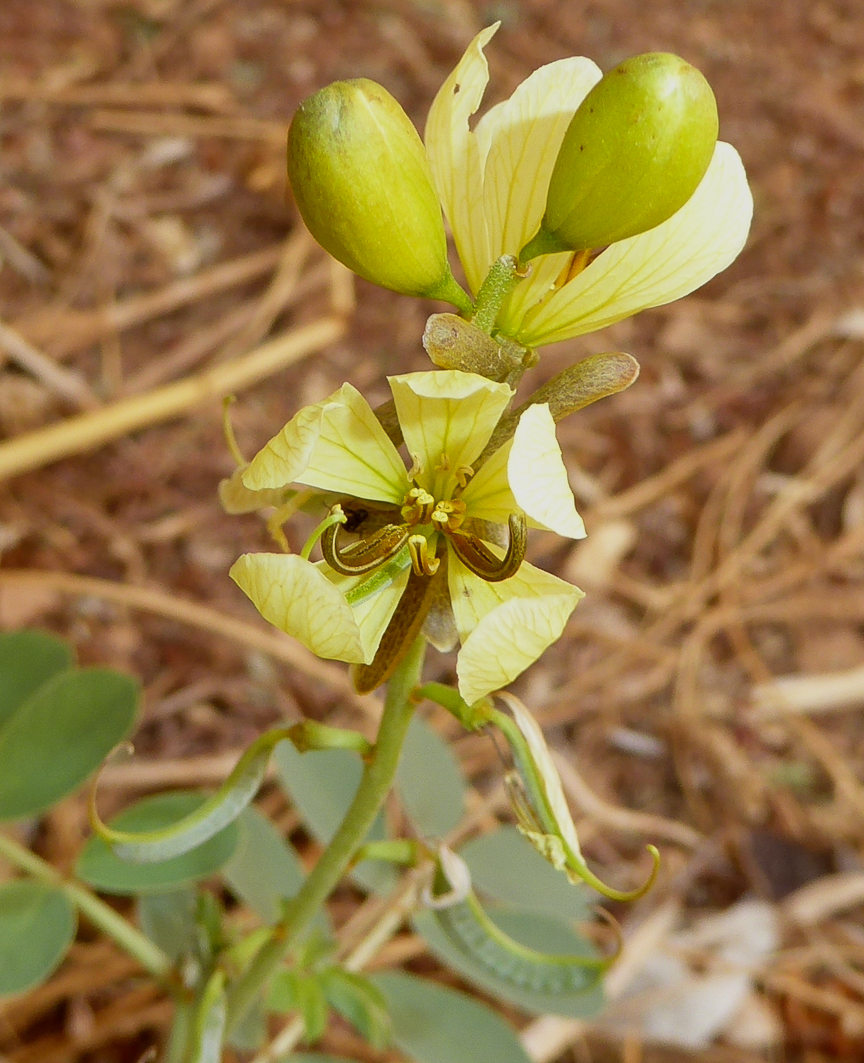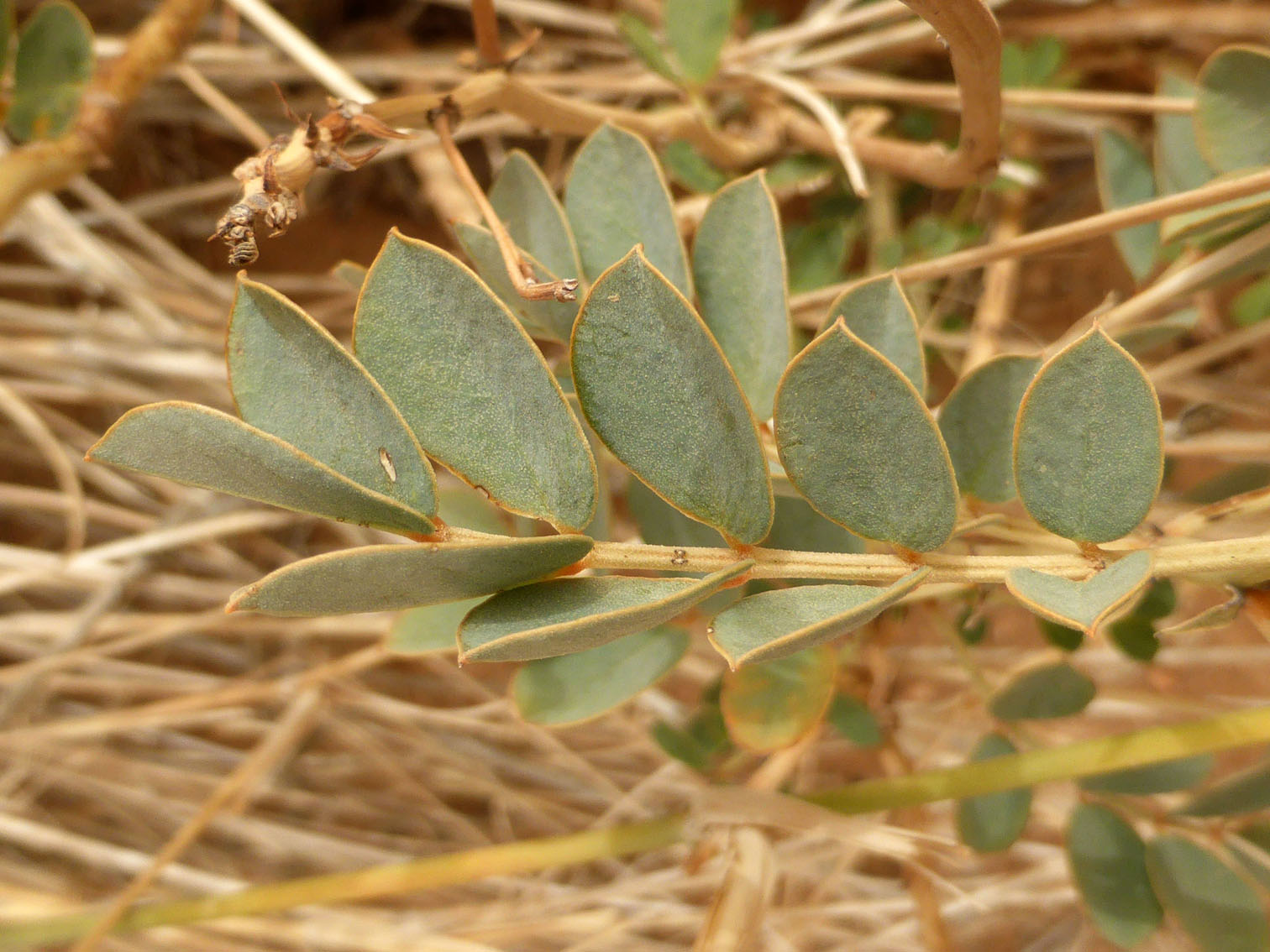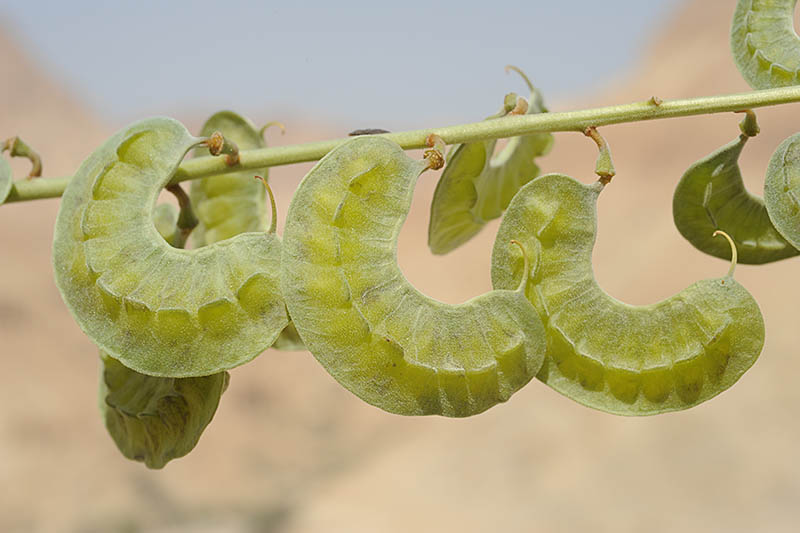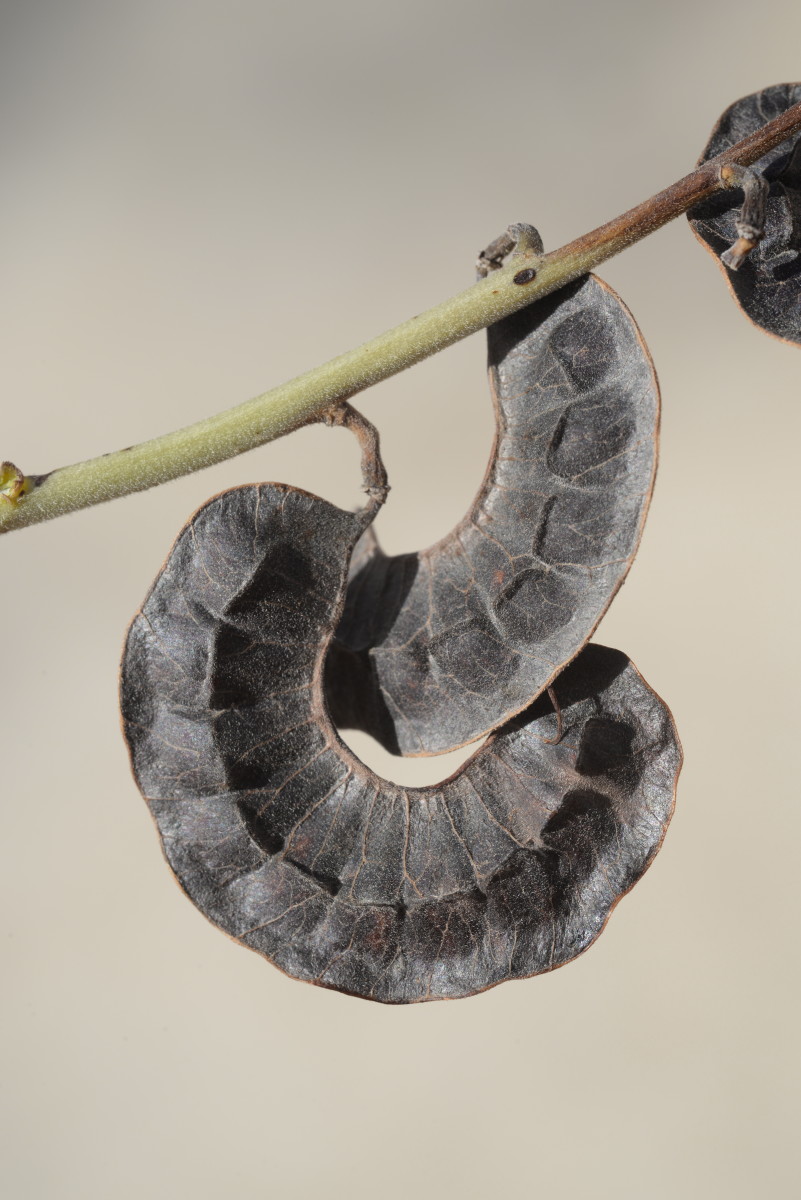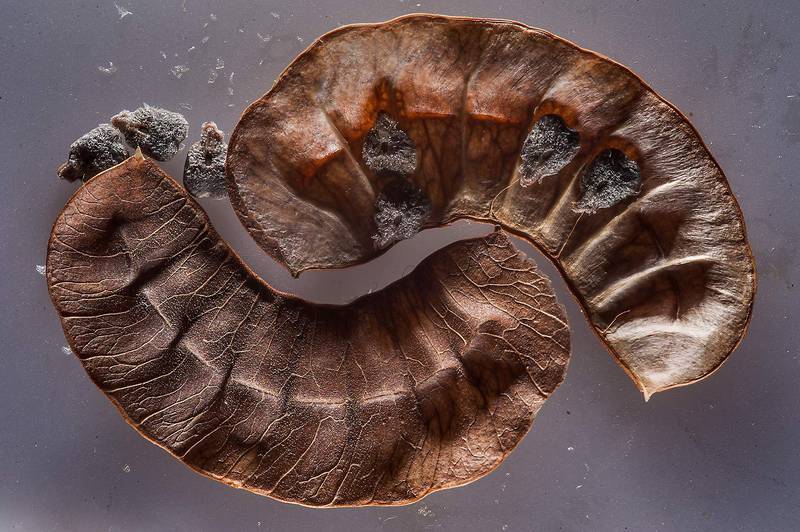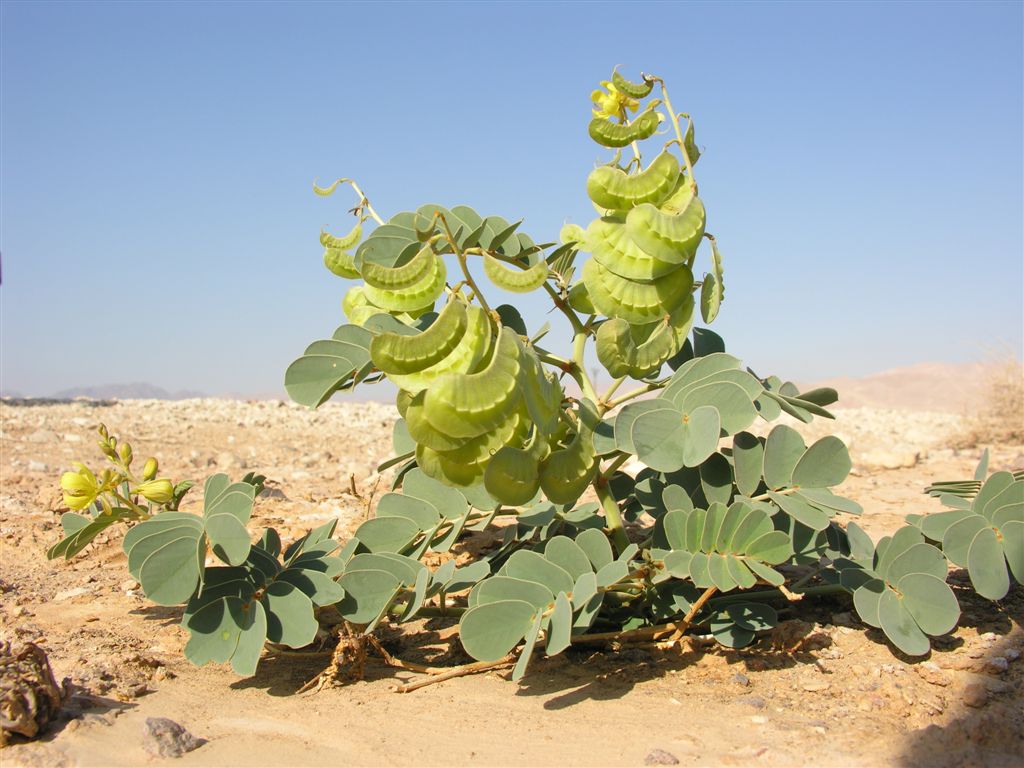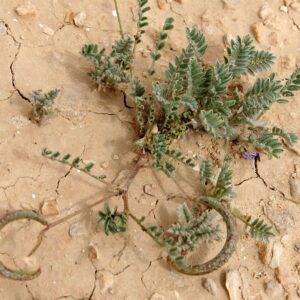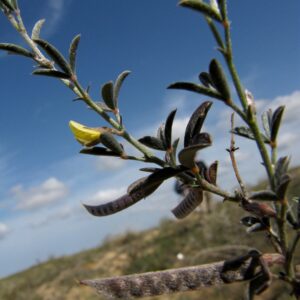| Senna italica Mill./ Homotypic Synonyms: Cassia italica (Mill.) Spreng., Cassia italica (Mill.) Lam. ex F.W.Andrews, it is a prostrate or ascending shrublet or herb from a woody base, to 15-60 cm high. Leaves paripinnate, stipules 5-6 × 1 mm, narrowly triangular, pubescent, persistent, petiole 0.3-2 cm long, pubescent, rachis 5.5-8 cm long, pubescent, eglandular or with a very small reddish gland between the leaflet pairs, leaflets in (4)5-7(8) pairs, 1.6-3.6 × 0.6-2 cm, the distal largest, oblong to broadly obovate, base broadly cuneate or rounded, slightly asymmetric, apex obtuse to rounded or retuse, usually mucronate, glabrous to sparsely pubescent, the margin and midrib beneath more densely pubescent, petiolules up to 1 mm long, glabrous to pubescent. Branchlets pale grey-brown, pubescent, weakly longitudinally ridged. Inflorescences axillary many-flowered racemes, 7-26 cm long, including the peduncle, bracts c.5 × 3 mm, broadly ovate, acuminate, pubescent, caducous, pedicels 2-3 mm long at anthesis. Sepals 5, elliptic to obovate, glabrous. Petals orange to yellow, obovate, slightly unequal. Stamens 10, two fertile with long arcuate anthers and very short filaments; five fertile with short straight anthers and straight filaments, three probably sterile with anthers curved into a semi-circle and straight filaments. Ovary flattened, glabrous to villous, style terete, stigma terminal. Pod weakly curved to almost straight, flattened, usually bearing distinct crests on the flat faces in the middle of each segment, mucronate (style-base), tardily dehiscent along both sutures. Seeds brown, 6-7 × 2-3 mm, obovate, flattened, with a narrowly elliptic areole c.2 mm long on each broad face. Life Form: Ch, Flowering in: Sept-Oct, Vern:——————, Phytochoria: Tro. + S. Tro, The native range of this species is Africa to Indian Subcontinent. Notes: Wild in Libya, Medicinal plant, rare species, confined to S. arid parts of Libya.
For more information: https://powo.science.kew.org/taxon/urn:lsid:ipni.org:names:518341-1, https://www.ipni.org/n/518341-1, https://www.worldfloraonline.org/taxon/wfo-0000164042, https://www.gbif.org/species/2957095, https://africanplantdatabase.ch/en/nomen/specie/125662/senna-italica-mill, https://www.floraofqatar.com/senna_italica.htm, https://www.teline.fr/en/photos/fabaceae/senna-italica, https://flora.org.il/en/plants/senita/, https://tropical.theferns.info/viewtropical.php?id=Senna+italica, http://www.westafricanplants.senckenberg.de/root/index.php?page_id=14&id=6475 |
| Distribution in Libya | ||
| Fezzan area | Ghat area | Jabal Al-Uwinat |
| (150 )km from Sebha to Germa 1973 | Ghat (Between Acacus and Tassili Mountains) 2004 Wadi Tanezzuft 2012 | Gebel Uweinat 1968 Jabal Al-Uweinat region 2008 |
| Bibliographic references: | |
| First: Encyclopedia Flora of Libyan: | |
| Jafri, S.M.H. & El-Gadi, A. (1980) Flora of Libya, Fabaceae Vol. (86) Department of Botany, Al-Faateh Univ., Tripoli, Libya. | |
| Second: Researches and PhD theses, master theses, Sorted by Newest: | pdf files |
| Mukassabi, T.A, Ahmidat, G., Sherif, I.M., ELMogasapi, A.(2012) Checklist and life forms of plant species in contrasting climatic zones of Libya. Biological Diversity and Conservation – 5 / 3 (2012) https://bit.ly/42hptsN, https://dergipark.org.tr/en/pub/biodicon/issue/55888/765799 |
plant species in contrasting climatic zones of Libya 2012 |
| Alzwai, A.M.H. (2008) A study of the vegetation covers of the Jabal Al-Uweinat region in Libya. Master Thesis – Botany Department – College of Science – Garyounis University – Libya. (In Arabic) | |
| Ahmidat, Gh. (2004) Study of the vegetation cover of the area between the Acacus Mountains and the Tassili Mountains (Ghat). Master Thesis. Department of Botany.College of Science. Sebha University. Libya. (In Arabic) |
